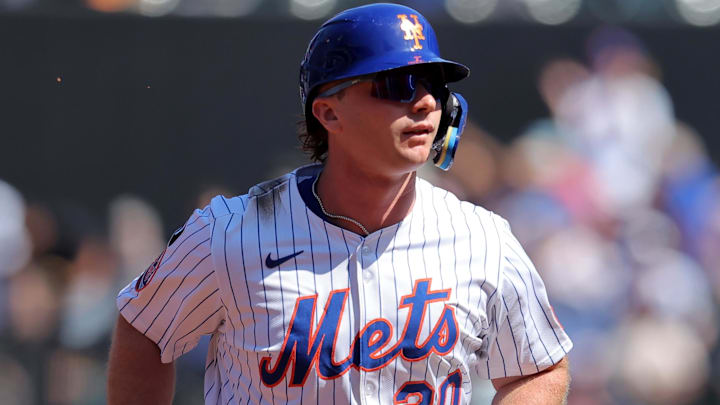Without a doubt, the Boston Red Sox require more power in their lineup. The once and future losses of Rafael Devers and Alex Bregman have reduced what little longball threat this roster already possessed; the total number of 30 home-run seasons on the roster stands at one: Trevor Story, who last did so in 2019. As a team, their total of 186 homers ranked ninth in the American League and ten below the league average.
Why not, then, should the team pursue the most obvious solution on the free agent market, Pete Alonso? “Polar Bear” has averaged 42 dingers per 162 games, and his total of 264 since his debut in 2019 ranks third most among all major league players. He has made the All-Star team in four consecutive seasons and just won his first Silver Slugger. Alonso seems the perfect antidote to Boston’s power outage.
Of course, there are several defects to such an ostensible solution. Against Alonso are his age, skillset, likely price, and the imperfect role he would fill on the roster.
Boston Should Avoid Chasing Pete Alonso During Free Agency
Entering his age-31 season, Alonso is not particularly young. This is his second entry to free agency and likely his last chance at a megadeal. Between these two considerations, he and his agent will push for a contract lasting at least five years with an annual value of around $30 million. Any team willing to meet this minimum would be paying for Alonso’s decline years.
A huge man with correspondingly little footspeed, Alonso must earn his bread with his bat. Though deployed at first base throughout his career, he has shown the aptitude of the average designated hitter. In fact, his iron glove has only rusted further with time, and it cost his team nearly ten runs with defensive ineptitude last season.
As a hitter, Polar Bear does one thing, albeit he does it as well as anyone not named Aaron Judge—he hits home runs. Beyond that, Alonso possesses no secondary skills: his career high in batting average is .272, and his walk rate (9.7%) is not robust enough to support an on-base percentage above the league mark. (He does attract more than his share of beanballs – 100 since 2019 – which helps offset the deficit.)
While that walk rate is ostensibly above average (the league average is 8.5 percent), it lies below the standard for his class of slugger: the four other most prolific home run hitters of the past seven years (Aaron Judge, Kyle Schwarber, Shohei Ohtani, and Matt Olson) possess walk rates of at least 12%.
Of these, Olson best presents the consequential difference in value; a first baseman only a year older than Alonso, Olson has a similar batting average (.259 to .253) and 30 fewer home runs. He also has an on-base percentage 13 points higher, and two Gold Gloves. As a result of these and other discrepancies, WAR favors Olson over Alonso by a magnitude of 3:2.
Thus, Pete Alonso ranks against his contemporaries; his closest historical counterparts present a bleaker contrast. Using Stathead, one can identify hitters with similar batting averages, home runs, doubles, and on-base and slugging percentages through their first eight seasons. This grants a list of eight players with identical skillsets to the subject, from which we may draw lessons on his future value.
The results are uniform: these were large men (at least six feet tall, with six weighing at least 220 pounds) with power and little speed, almost all first basemen, and apart from Mark McGwire did very little after turning 31, as they combined for a total of three seasons of at least 2.5 WAR. They also played a collective 231 games at age 34 or older (again, excepting the steroid-aided McGwire).
Returning to immediate concerns, as a natural DH, Alonso further restricts the flexibility of a roster that is too well-laden with outfielders yet short on infielders. If forced to stay in the field, this would compound an underwhelming array of the aging Trevor Story, rookie Marcelo Mayer, and a perennial black hole also known as second base.
Payroll concerns may also crop up—while the Red Sox have locked up linchpins such as Roman Anthony, Garrett Crochet, Ceddanne Rafaela, and Brayan Bello, the ongoing search for a number two pitcher would necessarily suffer from a hefty allotment. Front office and fans alike may well recall how David Price’s ill-fated signing led to the departure of Mookie Betts lest that mistake be repeated so soon.
In conclusion, the Red Sox would be paying a premium for one or two solid seasons, followed by at least three terrible campaigns, not to mention the consequent opportunity costs of such an albatross. To paraphrase Ralph Waldo Emerson, should the Red Sox sign their white bear, “it will be as the man swallows the arsenic, which brings him down in turn. Alonso will poison us."
